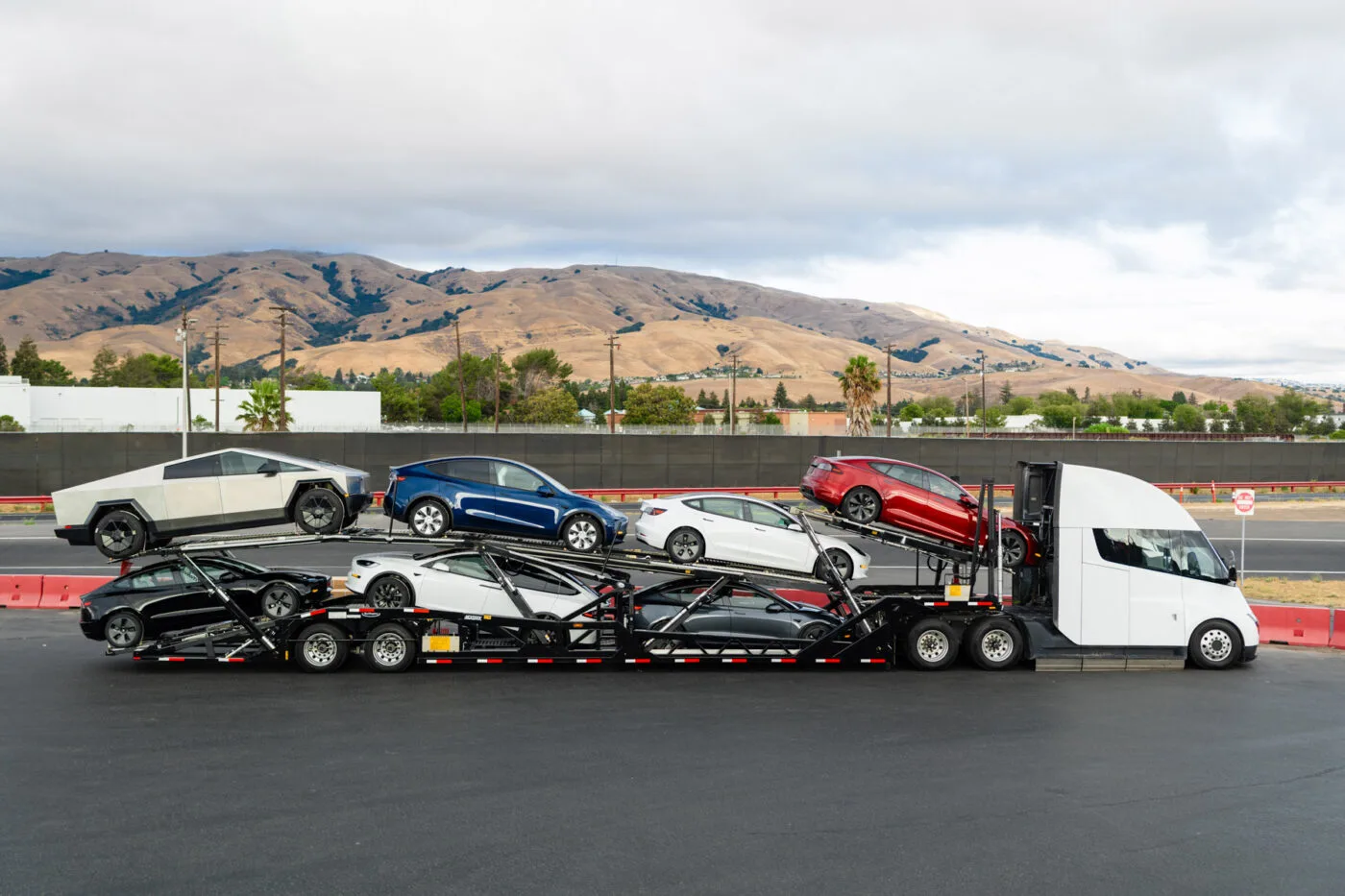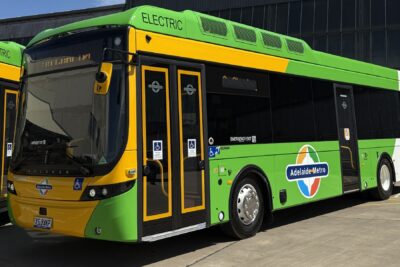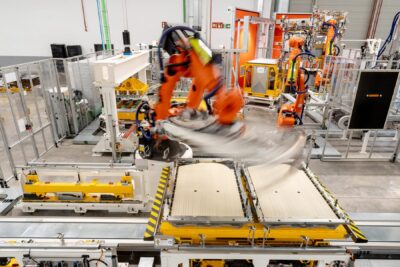Q1/2025: Only $400 million separates Tesla from the red
2024 was a difficult year for Tesla. It showed that the days of perpetual growth are over. However, after a weak start to the year, Tesla was able to finish on a high note. 2025 is now off to another poor start for Tesla – clearly undercutting the declining figures from Q1/2024, which were caused by the Red Sea conflict and an arson attack at Gigafactory Berlin, among other things. The manufacturer now cites the production ramp-up of the Model Y Juniper as the main reason for the thoroughly botched start to the current year. Future quarters will show whether this is really the main reason for the sobering figures.
Specifically, Tesla recorded a turnover of 19.3 billion US dollars and a profit of 409 million US dollars in Q1/2025. Both results are exceptions to the rule in a negative sense. Sales fell by 9% compared to Q1/2024 and by 25% compared to the previous quarter. Looking just at the turnover of the automotive business (excluding the Supercharger and energy business), turnover plummeted to 14 billion US dollars, which corresponds to a drop of 20% compared to Q1/2024 and a whopping 29% compared to Q4/2024.
Net profit slumps 71 per cent
The current dip in the company’s net income is also striking. With 409 million dollars, Tesla’s GAAP has fallen back to the level of Q1/2021. Tesla’s profit had not slipped below the billion-dollar threshold since mid-2021. Compared to Q1/2024, it is now down by 71 per cent, and compared to the previous quarter by a staggering 81 per cent. The fact is: without the booming energy business and the reliable income from CO2 certificate sales (‘regulatory credits’, Q1/2025: $2.6 billion dollars), Tesla would probably not have been in the black between January and March.
The EV maker attributes the sharp decline in part to the production ramp-up of the updated Model Y at all four plants. According to the company, the simultaneous changeover of Model Y lines everywhere led to several weeks of production downtime in the first quarter, but the company also cites ‘uncertain times’, increased operating costs, expensive AI and other R&D projects and a lower average vehicle sales price as the cause.
Only 2.1 per cent operating margin
The latter is a result of Tesla’s pricing and product mix and culminates in an operating margin that plummeted to 2.1 per cent in the first quarter of this year. To compare: in 2022, this figure was already at 19 per cent, most recently it fluctuated roughly between 5 and 11 per cent. However, Tesla has been cutting its profitability in favour of sales for some time now. In the fourth quarter of 2024, the company still achieved a record of almost 500,000 vehicles delivered, but apparently discounted them so heavily that revenue from the car business plummeted.
As reported, Tesla produced 362,615 vehicles and handed over 336,681 cars to customers in the first quarter of 2025. Both are clearly below average and have already pointed to weakening financial figures. Expressed as a percentage, Tesla’s production fell by 16.3 per cent in Q1 and by as much as 21 per cent compared to the fourth quarter. The picture is similar for deliveries (-13% YoY, -27% compared to Q4/2024). The last time Tesla reported such low vehicle figures was in the second quarter of 2022.
The usual picture emerges for the model series: the Model 3 and Model Y – here is our driving report on the Juniper model – continue to drive the volume. In the opening quarter, the two mid-range models totalled 345,454 units built and 323,800 units delivered. The Model S, Model X and Cybertruck are simply summarised under ‘other models’ – with only 17,161 vehicles produced and 12,881 delivered.
BYD is gaining on Tesla
The reasons for this decline are the subject of much debate. It is undisputed that Tesla has a relatively outdated product range and that the most important facelift – that of the best-selling Model Y – will only be reflected in future statistics. At the same time, CEO Elon Musk’s controversial political activities are also likely to have played a certain part in the reluctance to buy. The fact is that Tesla was no longer the largest manufacturer of electric cars internationally between January and March. China’s BYD Group sold 416,388 BEVs in the first quarter, and as BYD also manufactures plug-in hybrids, sales totalled 986,098 units. The two EV manufacturers were already neck-and-neck in 2024. BYD kicked off 2025 with a considerable lead.
One positive aspect is that during the switchover to the updated Model Y, Tesla prepared the factories for the introduction of the announced cheaper models later this year. It is certain that Tesla will release a slimmed-down Model Y. While the manufacturer emphasises in its annual report that the start of production for these ‘more affordable models’ is still scheduled for the first half of 2025. Reuters, on the other hand, cites insiders who say these models are likely to be delayed ‘by at least several months’. Either way, Tesla explicitly states that ‘given economic uncertainty resulting from changing trade policy, more affordable options are as critical as ever’.
As for the new models themselves, Tesla is keeping a low profile. Even in the usual list of individual plant capacities, the company does not reveal where the vehicles will be built. The largest Tesla plant is still Giga Shanghai with a capacity of over 950,000 vehicles, followed by Fremont (100,000 Model S/X and over 550,000 Model 3/Y) and Giga Berlin with over 375,000 Model Ys, on a par with Giga Texas – where the production capacity is split between 250,000 Model Ys and 125,000 Cybertrucks.
Model Y Juniper remains a beacon of hope
However, Tesla supports the theory that the current weakness is primarily the result of a reluctance in demand, which can be explained by the collective wait for the Model Y Juniper: “We achieved record orders for a single day in the APAC region when we launched New Model Y,” says Tesla. And: “The Shanghai Model Y factory fully ramped production in six weeks, our quickest ramp of any vehicle ever.” The Model Y Juniper may actually boost sales figures again – future quarterly results will show whether the assumption is correct.
It will, of course, be interesting to see how Tesla assesses the economic situation characterised by the US tariffs, as CEO Elon Musk has recently been a prominent figure in US politics. “Uncertainty in the automotive and energy markets continues to increase as rapidly evolving trade policy adversely impacts the global supply chain and cost structure of Tesla and our peers. This dynamic, along with changing political sentiment, could have a meaningful impact on demand for our products in the near-term,” Tesla warns quite clearly. Elsewhere, the company speaks of ‘near-term profitability hurdles’.
Against this backdrop, the company does not want to provide a growth forecast for 2025, but promises to do so in the Q2 report. However, as in the annual report for 2024, Tesla reiterates its claim to fully utilise its production capacity of almost three million vehicles thanks to the more affordable models before investing in new production lines. Specifically, production is set to grow by 60 per cent compared to 2024. Based on the 1.77 million units from the previous year, that would be almost 2.84 million cars – and a return to the growth path.
Tesla Semi and Cybercab still planned for 2026
Tesla also makes some announcements about individual models in the ‘Outlook’ section. For example, the company is on schedule to start volume production of the Semi electric truck in Nevada and the Cybercab in Texas in 2026. The latter is also due to start as a ‘pilot project’ in Austin in June. With the Cybercab, Tesla intends to introduce a new, ‘ revolutionary “unboxed” manufacturing strategy’. Tesla has also announced the first deliveries of the Cybertruck in Saudi Arabia this year – the first Cybertruck market outside North America.
Tesla’s ambitions in the fields of AI, robotics and software also run like a red thread through the annual report. For example, the company confirms that it activated some ‘Full Self Driving’ functions with a software update in China in the first quarter and plans to continue doing so in Europe. In addition, it will increasingly utilise bots in factories and areas of AI, software and fleet tools are expected to ensure increasing profits in the future. All of this would require Tesla to invest heavily over the long term, putting a permanent strain on the balance sheet. However, Tesla is unperturbed: “AI is a major pillar of growth for Tesla and the broader economy and key to our pursuit of sustainable abundance.”





0 Comments